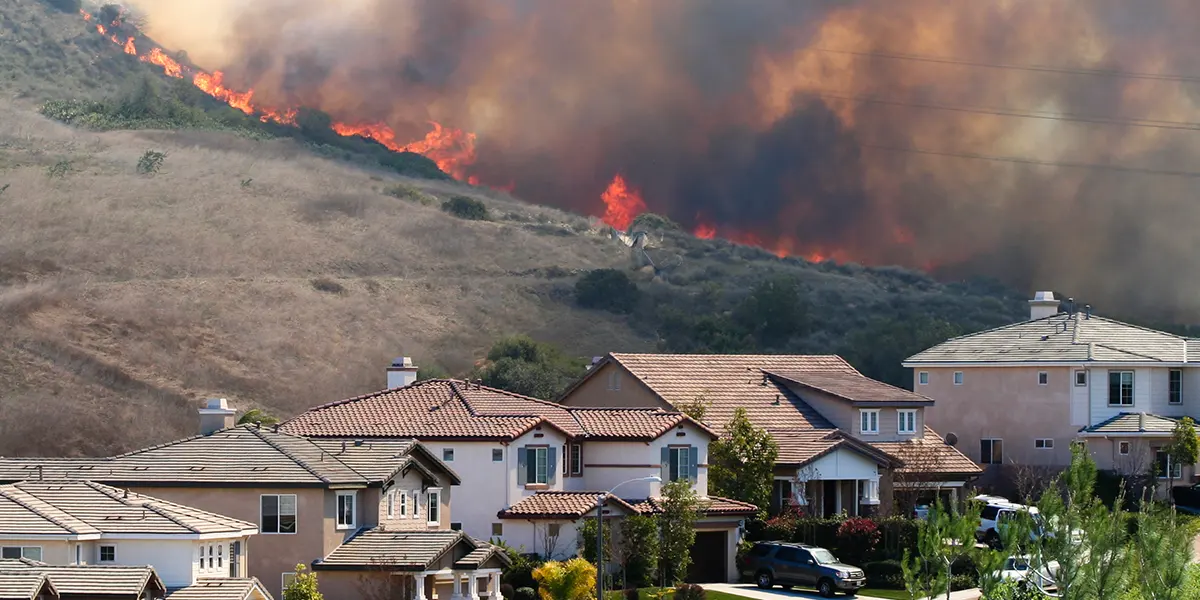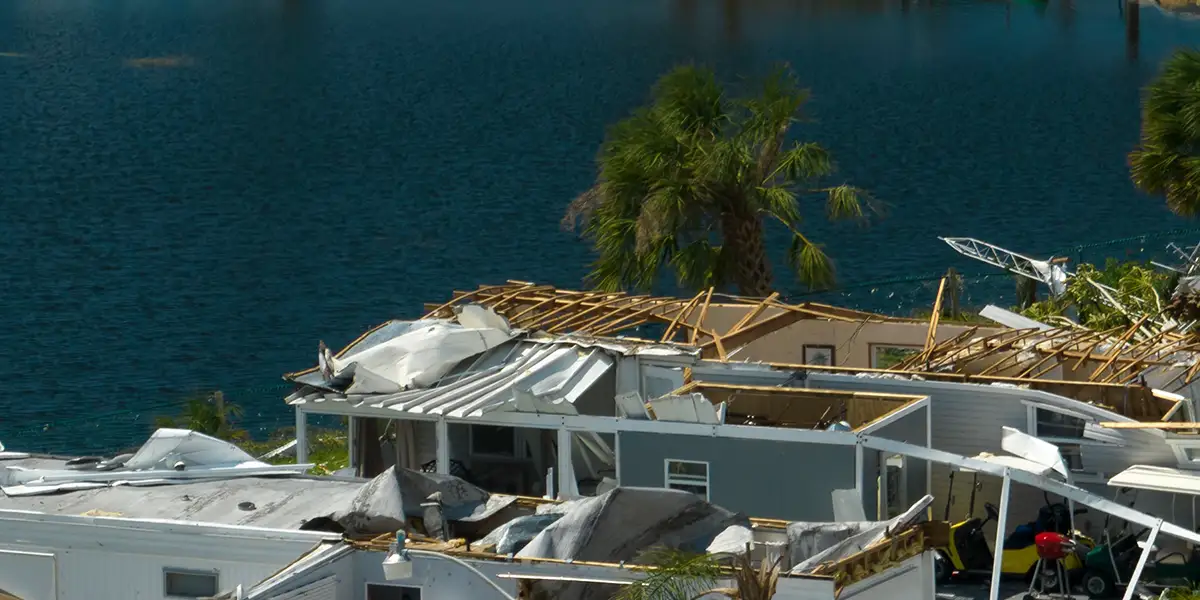This year's COP27 climate summit has drawn to a frantic close in Egypt, with negotiations continuing beyond the final day. It has been a COP full of criticism, outcry, and hope, with over 100 world leaders and 45,000 participants descending into Sharm el-Sheikh for the conference taking place when the world faces the backdrop of war, an energy crisis, and the risk of a global recession. But as the climate has struck unprecedented disasters all over the world and global CO2 emissions are forecasted to hit a record high this year, these factors should have been stark reminders for nations during what was dubbed as the 'implementation' COP27 to act quickly against the climate crisis and build upon the momentum of pledges made last year at Glasgow's COP26. With some wins and losses at the conference, what key decisions have been made, and what did it all mean for industry professionals?
Key Takeaways
- The financial system set breakthroughs with initiatives and agreements to multilaterally rethink the global financial system to be climate resilient and enable it to be an opportunity for financial institutes to abide to climate-friendly international standards by disclosing both their exposure to transition risk and their emission reduction targets.
- Mitigation actions lacked in their ability to abide to the target of 1.5℃. The ‘phase down’ wording instead of ‘phase out’ was driven by fossil-friendly nations’ influence on the final agreement to set a vision to COP28 with failure to produce real mitigation actions.
- A lack of significant adaptation funding prevailed. Despite getting more attention than before, COP27 actions were not enough to make adaptation enforcement for industries truly soluble.
- Loss and damage were the breakthrough - perceived as a losing issue; it managed to secure a large fund for the first time to support the lowest--income and climate-vulnerable countries in the world.
The Conference
COP27 has left a lot of gaps and work to be done for COP28 next year in the United Arab Emirates. Even though COP27 has been more granular than COP26 with public and private sector actors working more closely together, with a greater emphasis on emerging and frontier markets as well as the larger presence of youth organisations, there has been a lack of materializations when addressing the climate science, simply not being delivered in the form of actions. Tuvalu Finance Minister, Seve Paeniu, summed up the experience with “deep regret and disappointment” that COP27 had been a “missed opportunity”.
The legacy of COP26 rapidly diminished as the final COP27 agreement did not go further than the Glasgow COP26 pledge to ‘phase down’ coal and ‘phase out’ inefficient fossil fuel subsidies and there was no reference to global greenhouse gas emissions peaking by 2025. Nations with fossil fuel interests successfully managed to stave off the demands for bolder climate action, with the EU even threatening to walk away from negotiations succumbing to frustration and disappointment. To add pressure on relevant stakeholders during the conference, greenhouse gas (GHG) emission projections were released during the event highlighting a dangerous elevation of the global average temperature at a troubling 2.7℃ increase above pre-industrial levels by 2100 if policies don’t improve.
A few wins for climate action at COP27 is the recognised rethinking of the global financial system to be climate resilient. Noel Quinn, group chief executive of HSBC, stated during COP27 that to help companies to enable an easier climate transition, it is “the right thing to do, the essential thing to do and a huge opportunity” that has been validated by organisations focussing on formative transition plans across adaptation, mitigation and loss and damage actions at COP27.
the less we mitigate, the more we have to adapt”
Adaptation
A focal topic at COP27 has been the limitations of humankind to adapt to the inevitable negative impacts of climate change. Validated by the Presidency announcing the Sharm El Sheikh Adaptation Agenda to build climate resilience for 4 billion by 2030, including action around 30 adaptation outcomes to address the adaptation gap and achieve a resilient world by 2030. This is reinforced by Christian Mumenthaler, Group Chief Executive Officer of Swiss Re, “the longer we wait, the more the global economy will be impacted, and the costlier adaptation to a warming planet will be.” It couldn’t come at a better time, as adaptation receives less attention than mitigation and is certainly far below what’s needed to build realistic resilience. UN Climate Change Executive Secretary Simon Stiell highlights the relationship between adaptation and mitigation as “the less we mitigate, the more we have to adapt.” At COP26, wealthy countries pledged to double adaptation finance, and so, it has been important at COP27 for nations to demonstrate how they can do that. However, adaptation action didn’t prevail in strength with a lack of large adaptation funding across the board. Recorded by Richard Klein that “there was an opportunity to show what ambitious and transformative adaptation could look like [at COP27]. But it didn’t happen.” For industries, it is a clear message that they need to prepare for adaptation; however, financial support from large funds is lacking for infrastructure projects, especially in developing countries.
Key COP27 Adaptation Actions:
- Race to Resilience: The launch of the Insurance Adaptation Acceleration Campaign to mobilise 3,000 insurance companies (equal to 50% of the market) by COP28 to align with the outcomes of the Sharm El Sheikh Adaptation Agenda. The objective is to scale the insurance industry’s ability to advance real climate risk reduction and pursue public-private partnerships to protect vulnerable populations.
- Regions Adapt on Progress: Regions adapt brings together 70 signatory leading states and regions on adaptation to foster collaboration that has the potential to impact over 300 million people.
- Pledges to the Adaptation Fund: This includes countries adding support to the GEF funds, Least Developed Countries Fund (LDCF), and Special Climate Change Fund (SCCF), for urgent climate adaptation. Announcing a total of $105.6M in new funding, Denmark, Finland, Germany, Ireland, Slovenia, Sweden, Switzerland, and the Walloon Region of Belgium, stressed the need for even more support for the Global Environment Facility funds targeting the immediate climate adaptation needs of low-lying and low-income states. The new pledges add to $413M that 12 donor countries pledged to the LDCF at COP26 in Glasgow last year.
- Adaptation through Nature-Based Solutions: 13 countries joined the Agriculture Breakthrough, co-led by Egypt and the UK, to work together to make climate-resilient agriculture the most attractive option for farmers across the globe by 2030.
- Adaptation Finance: The European Bank for Reconstruction and Development (EBRD) launched its Climate Adaptation Action Plan (CAAP) to boost adaptation finance by committing to make more than half of its investment green by 2025.
Mitigation
Aware of questions surrounding climate targets that feel out of reach, COP27 continued to attempt at making the climate targets feel relevant, with several different types of stakeholders committing to decarbonisation targets for the planet to stand a chance at reaching climate targets. As wealthier countries wanted to phase out the use of most polluting fossil fields, larger developing economies did not. The agreement of COP27 finalised the “phasing down” instead of “phasing out” of fossil fuels with limited action by industrialised nations to reduce GHG emissions and realistically reaching the limit of 1.5℃. Despite the disappointment, it is crucial for professionals to continue to mitigate actions seriously and abide by net-zero targets to reduce climate risks.
Key COP27 Mitigation Actions:
- Cities Race to Zero: From COP26, more than 1,000 cities said they would reduce their emissions to net-zero by the 2040s or sooner. COP27 has seen several initiatives, including the launch of Beat the Heat: Nature for Cool Cities Challenge. Cities in developing countries are invited to participate in the challenge by pledging to increase nature-based solutions in their urban areas by 2030 and demonstrate tangible progress by 2025.
- The Global Methane Pledge: Launched at last year’s COP26, the pledge is a voluntary agreement to reduce global methane emissions by 30 percent below 2020 levels by 2030. To date, more than 130 countries have signed the pledge. At COP27, countries have individually pledged their own methane targets as well as collectively built upon the COP26 pledge with the Methane Alert and Response System, a public database of global methane leaks to help encourage companies and governments to curb methane emissions.
- Carbon Pricing: The IMF has applied pressure to the idea that the average global price of carbon must go up to at least $75 a tonne by 2030.
- Carbon Dioxide Removal 2030 Breakthrough: A collaboration to dedicate that by 2030, through several methods, carbon dioxide removals are responsibly scaled to remove 3 billion tonnes of CO2 per year, with another 500 million tonnes per annum being stored for at least 100 years.

Climate Finance
COP27 was a large success for the global financial system towards building climate resilience. For the first time, a COP meeting included a call to reform the global financial architecture so that it better aligns with climate goals. Tweaking mandates of multilateral lenders, including the International Monetary Fund (IMF) and the World Bank. Furthermore, the presence of multi-stakeholders, including regulators and supervisors emphasised the importance of sustainable finance based upon the fact that climate risk is financial risk. The sphere of regulator influence is expanding to boost solutions to climate change.
Disclosures also progressed with regulators pushing for more disclosure of risks in investors’ portfolios and methodologies competing for best usage, such as the Climate-related Financial Disclosures (TCFD) and the soon Taskforce for Nature-related Financial Disclosures (TNFD) with the focus on sustainable finance growing. Last of all, COP27 saw the rise of blended finance as a solution to the lack of funding to fight climate change, especially in developing countries, to mitigate risk. The momentum of climate finance and the understanding of how climate change poses a deep risk to the global financial system was evident at COP27, especially by regulators determining direction for climate finance having so spectacularly failed to address climate change so far. Yet, there remains work to be done. Financial institutes need to meet increasing regulation standards and targets to prevent climate risk from jeopardising their operations and negatively impacting the global financial system.
Key COP27 Climate Finance Actions:
- Net-Zero Banking Alliance (NZBA): Accounting for decarbonisation targets of over 60 member banks with promising indicators of early progress in target setting. The NZBA has nearly tripled in size in just 18 months: from launching in April 2021 with 43 founding members, the alliance now comprises 122 members in 41 countries, representing about 40% of global banking assets.
- Net-Zero Asset Manager Initiative (NZAM): 291 asset managers with $66 trillion in assets have committed to achieving net zero alignments by 2050 or sooner, drawing on the Net Zero Investment Framework to deliver these commitments.
- Net-Zero Asset Owners Alliance (NZAOA): 80 members with $10.9 trillion in Assets Under Management (AUM) and 44 members have set short-term (2025 and 2030) decarbonisation targets. These members represent $7.1 trillion – two-thirds of the total AUM.
- The Network of Central Banks and Supervisors for Greening the Financial System (NGFS): The initiative launched the ‘Blended Finance Handbook’ with demonstrative projects.
Loss and Damage
The concept of loss and damage was on the formal agenda for the first time this year at COP as mostly perceived as a losing issue. A key sticking point for determining how developed nations should compensate developing countries, including V20 countries, for the impact of immediate and inequitable climate change-fuelled disasters they had little responsibility. As climate disasters become more frequent and severe, the V20 risks getting into further debt as much of the climate financing earmarked for low-income countries comes in the form of loans. Since 2000, V20 states have lost around $525bn to climate impacts.
Loss and damage has been a hot subject at COP27 with wealthier countries holding out against providing financial help for more vulnerable and low-income countries, reluctant as it will take time to establish whether such a fund was needed. Evident by participants coming to a final agreement after the end of COP27 early on Sunday to establish a fund following tense negotiations. Despite the success of an agreement, many of the more contentious issues regarding the fund will be held at next year's COP28 summit. Still, the creation of the fund is a large success for more vulnerable countries that also includes support outside the agreement with Germany as leader of G7, launching the complimentary 'Global Shield' climate finance insurance initiative at COP27 by providing €170M to support it. Countries like Canada, Ireland and Denmark have also pledged a further €40M to the scheme.
why are we celebrating loss and damage when we have failed on mitigation and adaptation?”
Failing to deliver
With high expectations from COP26, COP27’s “together for Implementation” of adaptation, mitigation and other initiatives made very limited progress at the conference. On a positive note, greater granular discussions were held with most progress made with loss and damage agreements as well as other agreements impacting industry stakeholders. This includes supporting the insurance and banking industry to build climate resilience with greater initiatives to use insurance to address climate risk with the Insurance Adaptation Acceleration Campaign. As well as banks committing to initiatives and alliances, rethinking how the global financial system is to be restructured with regulators pushing for more disclosure of climate risks in investors and discussions on data availability bottlenecks for assessing climate risks with the need for reporting tools to make investors lives easier in terms of climate impact.
The inability to deliver at the conference was summed up by Aminath Shauna, Environment Minister for the Maldives asked, “why are we celebrating loss and damage when we have failed on mitigation and adaptation?” Substantial division prevailed at COP27 as individual fossil fuel-heavy nations became committed towards their own needs lobbying real changes, exposing the conference to what it has become, hollow.
Discrepancies in COP27 were evident by a lack of momentum and missed opportunities concerning the ‘phase out’ of fossil fuels and truly treating 1.5℃ as a limit and not even a target to end the conference with very limited progress. For COP28, a leaner and more focussed on net zero targets is critical, with smaller bodies to address key issues working together more than once a year and preventing.
Bounds Forward
But until then, the key takeaway for businesses from COP27 is that heightened transparency and compatibility of climate efforts can be expected to be improved, and that's where Climate X can help you analytically assess your climate risk and accelerate formative climate transition plans with Spectra.
Sources
- https://cop27.eg/
- https://www.globalcarbonproject.org/carbonbudget/
- https://ukcop26.org/
- https://sdg.iisd.org/events/2022-un-climate-change-conference-unfccc-cop-28/
- https://ec.europa.eu/commission/presscorner/detail/en/SPEECH_22_7042
- https://climateactiontracker.org/
- https://www.ft.com/content/c82ea24a-5f39-404f-a236-67d4dcf91b82
- https://climatechampions.unfccc.int/wp-content/uploads/2022/11/SeS-Adaptation-Agenda_Complete-Report-COP27_FINAL-1.pdf
- https://www.swissre.com/risk-knowledge/risk-perspectives-blog/group-ceo-on-climate.html
- https://unfccc.int/news/at-cop27-scientists-warn-against-limits-of-adaptation
- https://www.marshmclennan.com/insights/publications/2022/november/fulfilling-a-legacy-of-societal-risk-management.html
- https://www.thegef.org/what-we-do/topics/least-developed-countries-fund-ldcf
- https://www.thegef.org/what-we-do/topics/special-climate-change-fund-sccf
- https://www.thegef.org/newsroom/press-releases/countries-pledge-added-support-gef-funds-urgent-climate-adaptation
- https://www.thegef.org/newsroom/press-releases/donors-pledge-413-million-help-most-vulnerable-cope-climate-crisis
- https://climatechampions.unfccc.int/breakthrough-agenda/
- https://www.ebrd.com/news/2022/launch-of-ebrd-climate-adaptation-action-plan-at-cop27.html
- https://www.globalmethanepledge.org/
- https://www.imf.org/en/News/Articles/2022/11/10/sp110922-MD-COP27-opening
- https://climatechampions.unfccc.int/system/carbon-dioxide-removals/
- https://www.unepfi.org/net-zero-banking/members/resources/
- https://www.netzeroassetmanagers.org/signatories/
- https://www.unepfi.org/industries/the-second-progress-report-of-the-net-zero-asset-owner-alliance-advancing-delivery-on-decarbonisation-targets/
- https://www.insuranceinsider.com/article/2avx9sgqo5piaqjtx46ps/global-insurers-section/cop27-g7-and-v20-launch-global-cat-scheme-to-support-vulnerable-countries
- https://unfccc.int/sites/default/files/resource/cop27_auv_2_cover%20decision.pdf
- https://www.bmz.de/en/issues/climate-change-and-development/global-shield-against-climate-risks
- https://www.marshmclennan.com/insights/publications/2022/november/fulfilling-a-legacy-of-societal-risk-management.html





